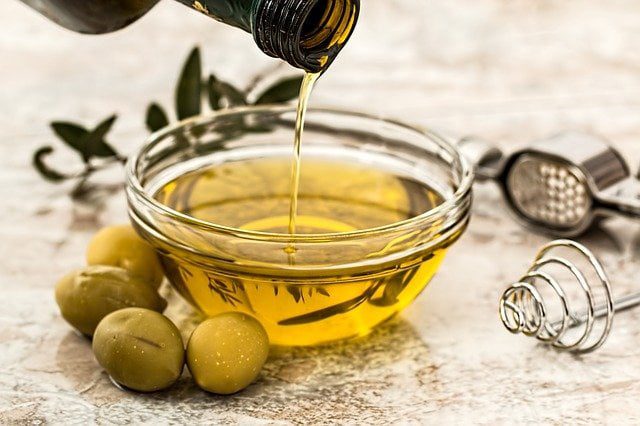Which cooking oil is best for health?

Cooking oil
Our daily acquaintance with soybean and mustard oil. Lately, the price of other edible oils is also increasing. Their nutritional value is also different. Knowing what nutrients are used in any cooking oil is good for health.
Every day we use different types of cooking oils to make food. Different brands in the market, different names of oils and eye-catching advertisements throw us into confusion. Many people suffer from dilemma about which one to keep and which one to use. So it is good to know what to look for when buying oil. All types of cooking oils contain fats. Fat does not mean that it is bad. Cooking Oils usually contain saturated, mono-unsaturated and poly-unsaturated fats, which vary in our blood cholesterol levels.
Saturated fats increase blood LDL (bad) cholesterol levels, which puts us at risk for heart disease. It is better to avoid cooking oils that are high in these fats. Again poly-unsaturated fats increase the level of HDL (good) cholesterol in the blood, which is beneficial. Oils that are high in poly-unsaturated fats and mono-unsaturated fats are safe to use. All types of oil bottle labels contain a list of nutrients. Note the amount of fat on this list when buying. Choose oils that are high in mono-unsaturated and poly-unsaturated fats. Remember, oils that are below 35% of saturated fat and 50% of unsaturated fat are good for daily use.
Another important point is the smoke point of the cooking oil. This means that the temperature at which oil burns and breaks down fats to form free radicals is harmful to our health. So a lot depends on the method of cooking. For example, olive oil has poly-unsaturated fat, but its smoke point is very low, so this oil is not suitable for frying. However, it is good for salad dressing and low heat cooking. In the way food is cooked in our country, it is appropriate to buy cooking oil with more smoke points (18 to 232 degrees). Let’s take a look at the nutritional value and health benefits of conventional oil in the current market.
Soybean oil
Soybean oil is the most popular in our country. This oil contains saturated fat below 35% and unsaturated fat above 50%. Its smoke point is also much higher (256 degrees). Soybean oil is more suitable for cooking at high temperatures, frying etc. In addition, the price of soybean oil is within our purchasing power. For this you can use soybean oil in daily cooking. However, various studies have shown that soybean oil increases the risk of diabetes, obesity, and various neurological diseases.
Mustard oil
Mustard oil contains about 60 percent mono-unsaturated fats. The result helps our body maintain a balance of cholesterol. Reduces the risk of cardiovascular disease. Mustard oil was once the only edible oil in rural Bengal. Mustard oil has been mentioned in Ayurvedic scriptures since ancient times for its medicinal properties. However, the use of mustard oil is declining day by day due to the widespread use of soybean. Mustard oil is not only useful for eating but also for hair and skin care.
Sunflower oil
This oil is rich in poly-unsaturated fats. Its smoke point is much higher (226 degrees). Suitable for any cooking daily. Sunflower oil contains omega-3 and omega-6, which reduce bad cholesterol levels and the risk of heart disease. Some studies have shown that in case of excessive frying, this oil produces a harmful substance called aldehyde, which increases the risk of cancer.
Rice bran oil
Rice bran oil is rich in mono-unsaturated and poly-unsaturated fats. Its smoke point (254 degrees) is high enough to be used in cooking any food. Various studies have shown that this oil lowers blood cholesterol and blood pressure. It also lowers blood sugar levels in type 2 diabetes. However, those who have low blood pressure, should use this oil with the advice of a doctor.
Olive oil
The circulation of olive oil in our country is not very high but not very low. As the price of this oil is higher than other oils, it is used only in the kitchens of the rich. The various natural ingredients in olive oil help keep the body healthy. Helps prevent diabetes, prevent breast cancer, strengthen bones, lose weight, keep the mind energized and control cholesterol, control high blood pressure and reduce pain. Olive oil is very useful not only in food, but also in our skin care. So you can use olive oil regularly for skin and hair care in winter. This oil is equally effective for dry, normal and oily skin.
Whatever oil you use in food, its quality depends on how and in what case you are using it. So before buying oil, be sure to buy nutritious. One thing to keep in mind is that no matter how good the oil is, overeating and overcooking are bad for everyone.
- Bangladesh women entrepreneurs to participate in US Programme
- Winter care for tub plants
- Cucumber soup will reduce excess body fat
- How to eat Soybeans to prevent bone loss and kidney disease
- Fruit peel to remove acne and dark spots
- Papaya leaf juice can prevent dengue and cancer
- PCOS symptoms and Solutions ! Is Dairy bad for PCOS?
- 10 Signs You Could Have Diabetes
- Who are in risk of diabetes? What to do?


